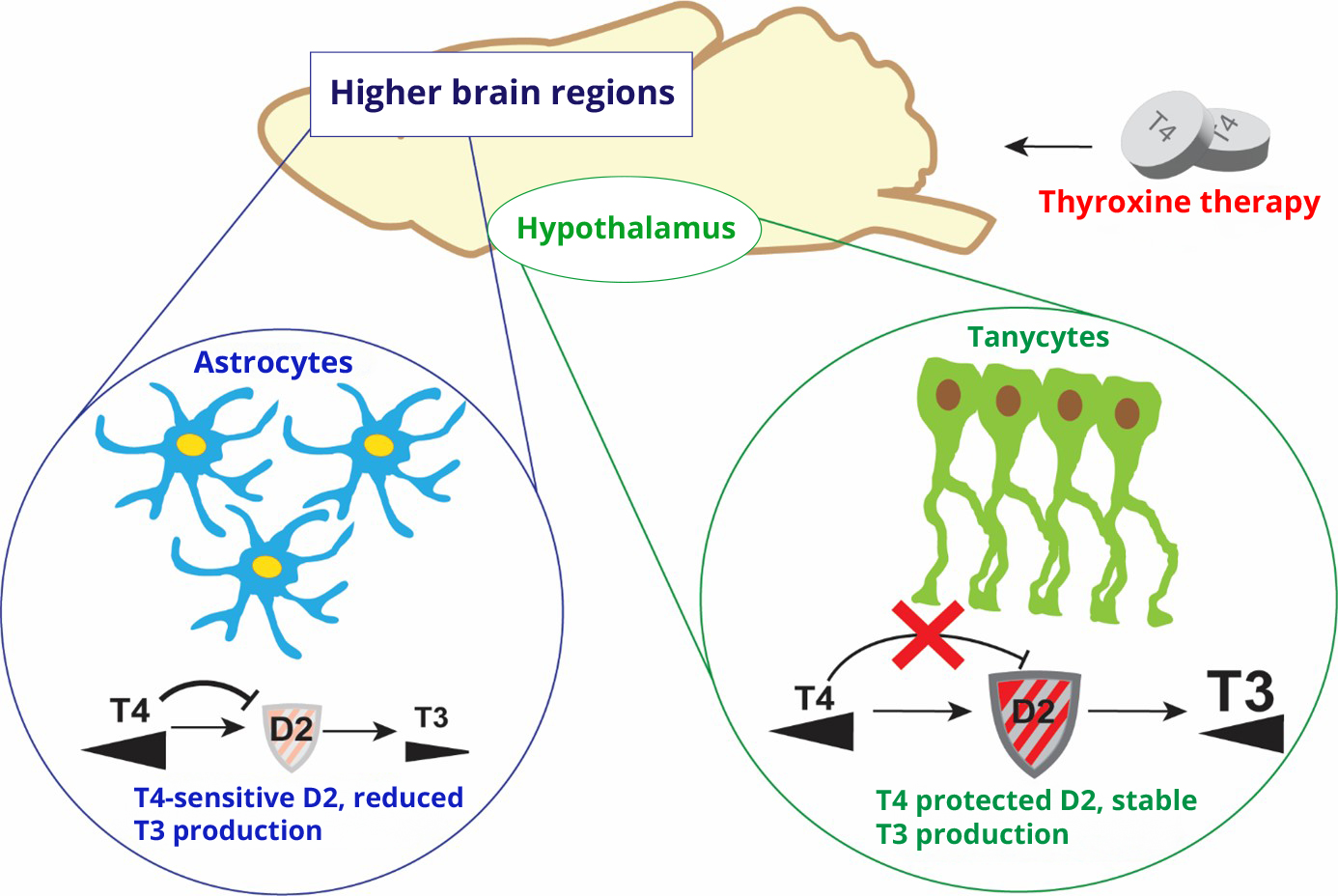Dispelling 'Brain Fog': A Breakthrough in Understanding Thyroid Hormone Regulation in the Brain
Hypothyroidism affects hundreds of millions of people worldwide. Researchers at the HUN-REN Institute of Experimental Medicine (HUN-REN IEM) have discovered new mechanisms by which thyroxine, a hormone used in therapy, is utilised in the brain. The Hungarian researchers' findings, published in the prestigious journal Proceedings of the National Academy of Sciences (PNAS), are of considerable clinical interest.
Hypothyroidism affects hundreds of millions of people worldwide. In this condition, the body experiences a deficiency of thyroid hormone, with neurological symptoms being the most common. Currently, thyroid hormone metabolism disorders are typically diagnosed by measuring hormone levels in the blood, and treatment decisions are based on these results.
Thyroid hormone balance is regulated at multiple levels. The hypothalamus, the centre of the 'endocrine brain', plays a key role in controlling circulating thyroid hormone levels. Additionally, a local regulatory system within tissues enables each tissue to utilise circulating thyroid hormones according to its specific needs. Researchers at HUN-REN IEM have been investigating this local system and its relationship with hypothalamic regulation.
One of the key functions of the local regulatory system is to activate thyroxine (T4), a form of thyroid hormone. To achieve this, type 2 deiodinase (D2), an enzyme found in cells, converts circulating T4 into T3, the active form of thyroid hormone. This discovery paved the way for T4 therapy to become the predominant treatment by the late 1970s.
This approach has led to genuine improvement in the vast majority of patients worldwide. However, in recent years, an increasing number of studies have shown that around 15% of patients treated this way continue to experience symptoms characteristic of hypothyroidism, particularly a neurological syndrome often referred to as 'brain fog'. This condition persists despite the normalisation of circulating hormone levels through therapy, meaning that, on paper, these patients appear to be 'cured'.
The Molecular Cell Metabolism Research Group at HUN-REN IEM, led by Balázs Gereben, has investigated the molecular mechanisms underlying how administered T4 hormone is utilised in the nervous system and whether its metabolism in the brain exhibits region-specific characteristics.

A schematic diagram summarising the researchers' findings. Thyroid hormone is activated with different efficacy in different brain regions due to cell type-specific regulation of the D2 enzyme. This may result in a hormone deficiency in higher brain regions under the influence of excess T4, despite normal thyroid hormone action in the hypothalamus, the centre of hormone metabolism. Consequently, blood parameters used for routine characterisation of thyroid hormone balance are normalised.
Their internationally patented THAI (Thyroid Hormone Action Indicator) mouse model played a key role in their research. In these genetically modified mice, tissues emit light, with the intensity proportional to the level of thyroid hormone action in the tissue. This enables precise measurement of thyroid hormone effects in specific brain regions. Using the THAI model, the researchers demonstrated that different brain regions respond differently to the same T4 treatment. While in some regions the same amount of T4 was sufficient to normalise thyroid hormone action, in others it was either insufficient or excessive. These findings suggest that different brain regions require different T4 doses to restore local thyroid hormone balance.
To understand these processes, it is important to note that although type 2 deiodinase (D2) converts thyroxine (T4) into the active thyroid hormone (T3), T4 can also inactivate D2. The higher the T4 levels, the less efficiently the enzyme produces T3, as it becomes inactivated in the process. According to research data, the varying sensitivity of brain regions to T4 is driven by differences in D2 activity. Furthermore, the molecular mechanism they uncovered functions in a markedly different way in the hypothalamus compared to other brain regions.
These findings demonstrate that while circulating hormone levels can be readily adjusted with T4, the efficacy of administered T4 in higher brain regions varies. Consequently, tissue hypothyroidism may persist in the brain even when circulating thyroid hormone levels are normalised. Although T4 monotherapy works exceptionally well for many patients, the current results represent an important milestone for those whose symptoms persist despite T4 supplementation.
In such cases, after careful consideration by specialists, additional therapeutic approaches may be required alongside T4. The nature of these approaches is currently the subject of intense debate. The researchers are hopeful that their findings will help improve the quality of life for millions of people.
The research was carried out in collaboration with AC Bianco's group at the University of Chicago and the Integrative Neuroendocrinology Research Group led by Csaba Fekete. It was supported by the US National Institutes of Health (NIH) and the National Laboratory of Translational Neuroscience. The study, with Richárd Sinkó as lead author, has been published in PNAS.

